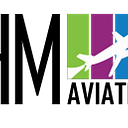Navigating the Skies: The Path to Becoming a Professional Pilot
In the realm of aviation, few pursuits are as exhilarating and challenging as becoming a professional pilot Program. The journey from aspiring aviator to a licensed professional involves rigorous training, hardwork , dedication, and a commitment to excellence. For those with their eyes set on the skies, understanding the professional pilot program is crucial to charting a successful course.

The Foundation: Understanding the Program
A professional pilot program is designed to equip students with the necessary skills and certifications to operate aircraft safely and efficiently. This program typically begins with foundational flight training, which includes ground school and hands-on flying experience. Ground school covers the theoretical aspects of aviation, such as navigation, meteorology, aircraft technical , human factors and regulations, while in-flight training focuses on practical piloting skills.
The Path to Certification
The journey to becoming a professional pilot involves obtaining various licenses and ratings. Initially, students work towards obtaining a Private Pilot License (PPL). This license allows pilots to fly for personal enjoyment but not for compensation. Following the PPL, the next milestone is the Commercial Pilot License (CPL). Achieving this certification permits pilots to be compensated for their flying services, which is a critical step towards a professional career.
In addition to these primary licenses, aspiring pilots must also acquire an Instrument Rating, which allows them to fly under Instrument Flight Rules (IFR) and navigate in challenging weather conditions. Advanced certifications, such as the Multi-Engine Rating and Airline Transport Pilot License (ATPL), are often pursued to enhance career prospects and opportunities within commercial aviation.
The Training Experience
Professional pilot programs are typically offered by flight schools, universities, or specialized aviation training centers. These programs are meticulously structured, combining classroom instruction with flight hours to ensure a comprehensive education. Students learn about aircraft systems, flight planning, and emergency procedures, and they gain valuable experience by logging flight hours with certified instructors.
Career Prospects and Industry Insights
Upon completion of a professional pilot program, graduates often find opportunities in various sectors of aviation, including airlines, cargo carriers, corporate flight departments, and government agencies etc . The demand for skilled pilots remains robust, driven by factors such as global air travel growth and the need for experienced professionals to replace retiring pilots.
Furthermore, ongoing advancements in technology and aviation regulations continue to shape the industry. Professional pilots must stay current with these developments to maintain their licenses and adapt to new challenges.
Conclusion
Embarking on a professional pilot program is a significant commitment that requires passion, perseverance, and a dedication to lifelong learning. For those who meet the challenges head-on, the rewards are profound — offering the unique privilege of navigating the skies and contributing to an industry that connects people and cultures around the world. Whether flying commercial jets or private aircraft, professional pilots play a crucial role in the global aviation landscape, making the journey to becoming one a truly rewarding endeavor.
Contact us _ 9810054079, 8376900364
VISIT US Professional Pilot Program
ReplyForward
Add reaction
